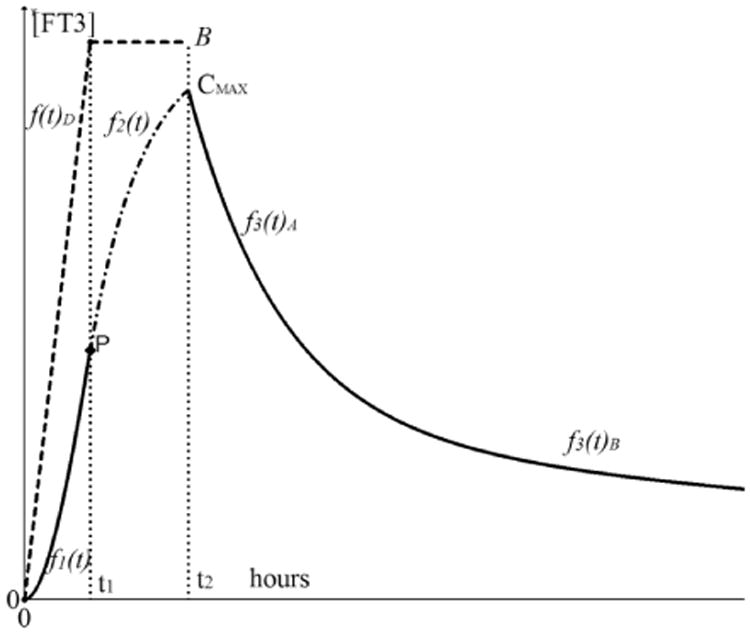Fig. 4.

The appearance and decay functions of [FT3] with driving function f(t)D. The driving function f(t)D is indicated as the dashed line from 0 to t1 with a maximum at [FT3] = B. The appearance part of [FT3] is divided in f1(t)0 < t < t1 indicated as a solid line from 0 to t1 and f2(t)t1 < t < t2 indicated as a dash-dot line. The second part of the appearance function f2(t) continues seamlessly from f1(t) in point P. The decay phase starts at t > t2 indicated with the solid line and is divided in a distribution phase f3(t)A and some time later in an elimination phase f3(t)B. The elimination phase represents the half-life behavior.
